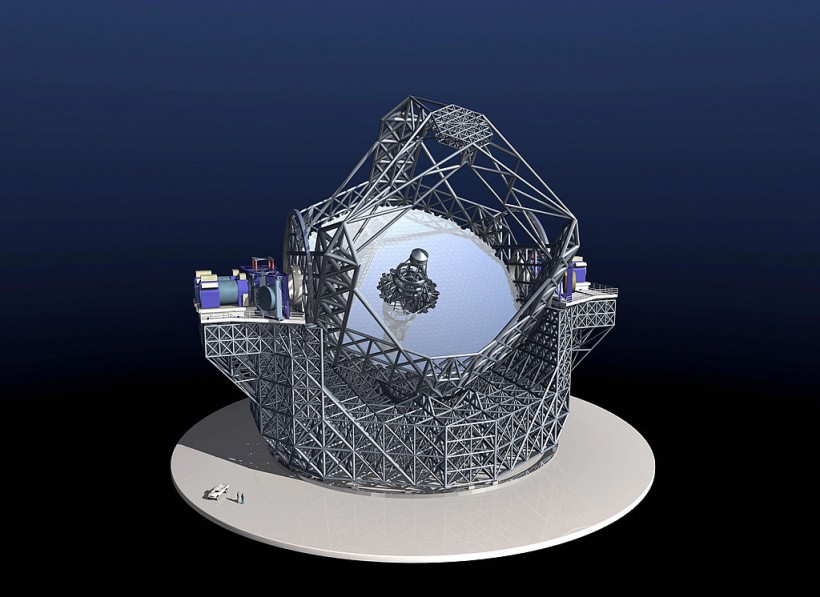Recent research, titled "Detecting Biosignatures in Nearby Rocky Exoplanets Using High-contrast Imaging and Medium-resolution Spectroscopy with the Extremely Large Telescope" in The Astronomical Journal,e suggests that the next generation of advanced telescopes may enhance the quest for potential extraterrestrial life.
The Ohio State University astronomers investigated advanced telescopes' capacity to analyze atmospheres for biosignatures on ten rocky exoplanets, crucial for potential extraterrestrial life evidence.

An artist impression image released 11 December 2006 by the ESO of the European Extremely Large Telescope.
Advanced Telescopes and Their Role in the Search for Habitable Worlds
The study highlights advanced telescopes' success in spotting biosignatures on exoplanets like Proxima Centauri b and GJ 887 b. While Proxima Centauri b may show signs of carbon dioxide, no exoplanet precisely mirrors Earth's early life conditions. Super-Earths, larger than Earth but smaller than Neptune, stand out as promising research targets.
The research also assesses the effectiveness of imaging instruments like the James Webb Space Telescope (JWST) and Extremely Large Telescopes (ELTs) in the quest for habitable planets.
Researchers focused on the direct imaging method, using coronagraphs or starshades to block a host star's light, enabling the capture of faint images of orbiting exoplanets. The ELTs, including instruments like the Mid-infrared ELT Imager and Spectrograph, showcased promising performance in discerning biosignatures, such as methane, carbon dioxide, oxygen, and water, though some required more exposure time.
These findings were compared to JWST's existing capabilities in outer space, recognizing the differences in environments and observational influences between ground-based and space telescopes.
While GJ 887 b emerged as an especially suitable target for ELT direct imaging due to its location and size, the study revealed that JWST's techniques, particularly for studying planetary atmospheres, may be more suitable for certain transiting planets like those in the TRAPPIST-1 system.
The comparison acknowledged the distinct strengths of each technology, emphasizing their complementarity in advancing our understanding of the universe. The study's conservative approach to data analysis acknowledges potential surprises in the true effectiveness of upcoming astronomical tools, emphasizing the crucial role of simulations in preparing for high-stakes missions.
As Extremely Large Telescopes are slated for completion towards the end of the decade, researchers anticipate further simulations to gauge their efficacy in exploring Earth's diverse indicators of life.
Unlocking Habitability Clues in Exoplanets
Previous studies suggest that a significant reduction in carbon dioxide levels in the atmosphere of a terrestrial planet, compared to other planets in the same system, may indicate the presence of liquid water and potentially support life on the planet's surface.
This novel indicator is now accessible for observation using NASA's James Webb Space Telescope (JWST). While other proposed signs of habitability are challenging or even impossible to measure with current technology, scientists emphasize that the relatively depleted carbon dioxide signature is the only detectable evidence of habitability at present.
The primary goal of exoplanet science is to identify habitable worlds and signs of life. Previous features discussed have been elusive with current observatories, but looking for carbon dioxide signatures offers a tangible and achievable avenue for investigating the potential presence of liquid water on other planets in the coming years.
RELATED ARTICLE: First Exoplanet Discovered Through Direct Imaging, Precision Astrometry Using Subaru Telescope
Check out more news and information on Exoplanets in Science Times.














